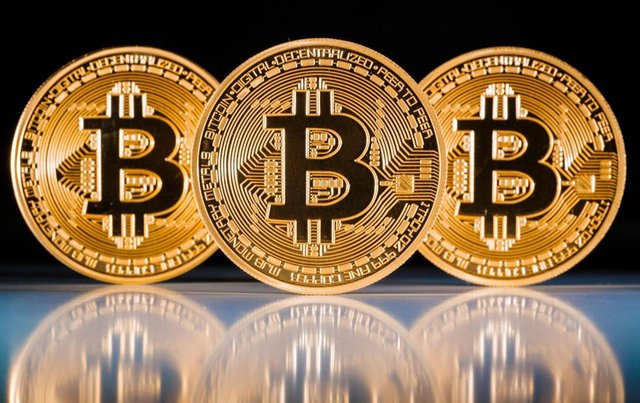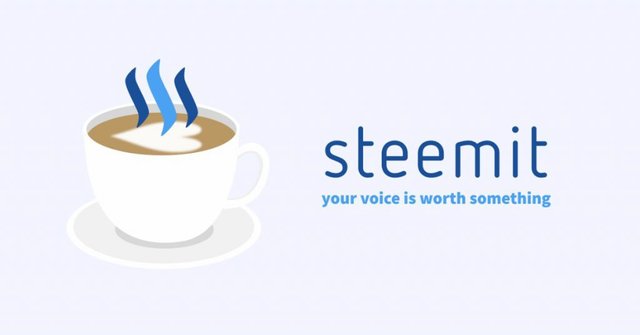What Steemit Actually is? | Complete Guide for Beginners | The Social Network of the Future is called Steemit!

That a cryptomoneda with a total market capitalization of approximately 14 million soars to more than 300 million does not go unnoticed.
But when that criptomoneda forms the backbone of a social network that rewards people for creating content, sometimes with thousands or tens of thousands of dollars for a single post, there is both enthusiasm and skepticism
Let's go with the introduction to Steemit, basic explanation of the project for the uninitiated:
Launched in March 2016 and gaining notoriety in July, Stewart, a social network based on blockchain, has seen a level of popularity uncommon in a few months. To date, it has polarized the experts in blockchain, while gaining a not inconsiderable amount of new users to the technology.
The child prodigy of Daniel Larimer, founder of BitShares, and Ned Scott, a former financial analyst, founders of Steemit announce that the platform aims to provide a place for users to create and promote content they believe is good and comment on The publications - all while earning money.
But Steemit is much more than a website to make money.

It is a real blockchain platform built on a piece of technology developed by Larimer called "Graphene", which allows the deployment of Blockchain technology specific to the application.
Scott, in an interview with CoinDesk, explained that the team came up with the idea of Steemit in January and, because of the Graphene framework, they were able to quickly launch the project in about two months.
The rest, like most things in the Blockchain world, is a little hard to explain.
The Boom:
For the first few months, there was not much talk about Steemit.
While there were pioneering miners and some users contributing to create content, the real explosion did not come until July 4. When the prey was opened. Steem, the criptomoneda, was launched, a capitalization valued at 1.3 million dollars was distributed to the users of the platform.
Scott explained that while all the posts, comments and upvotes that had occurred on the site prior to July 4 were all in the block chain, the rewards that had been promised to their users for their contributions had not been distributed. The underlying idea was that the team wanted to continue testing the platform, finding bugs and fixing them before a fever of new Steemians registered.
He warned that no matter how diligent and professional the development team is, there will be bugs and they wanted to make sure Steemit was safe for everyone.
However, July 4 was a day everyone was waiting for.
Scott said:
"What happened on July 4 was like the end of a three-month day ... from then on, the rewards were distributed on a continuous basis, that first day, however that momentum that had been built was unloaded"
And with that "pop", users who had been watching their balances up were instantly rewarded.
One currency, two smart contracts
Part of the confusion with Steemit lies in the different ways in which currency is presented to users.
At the root is the coin Steem, which is the typical freely interchangeable token similar to bitcoin, ethereum or any other cryptoconversion. But that same Steem can be put into two different types of smart contracts depending on the particular utility that an individual wants.
The first is called Steem Power, which provides utility and leverage. Steem Power is the backbone of an account's voting potential. In other words, the more Steem Power has an individual, the stronger Steemit votes.
Scott explained that the team wanted to provide a mechanism by which people could have a long-term interest in the project, while allowing others to continue with their speculation. In the whitepaper, Steem Power is compared to long-term capital commitments, similar to what a risk investor could do.
While users can invest their money instantly, you should spend a period of time to see a return on that investment.
In the case of Steem Power, if a user wants to convert back to Steem's base currency, he will have to wait for it to happen in 104 conversions per day.
The second smart contract is called Steem Dollars, which also trades in coinmarketcap with a low value variable at 1$.
Scott explained:
"This is the chain of blocks telling Steem Dollars headlines that, at any point in the future, the platform will turn their Steem Dollars into a Steem value after a seven-day conversion process"
This seven-day conversion process is intended to minimize the ability to create arbitrage attacks by market timers. If the Steem Dollars were convertible into Steem immediately, a user could take advantage of a difference in price, convert their Steem Dollars into regular Steem and earn more than the $ 1 value of the smart contract intended for him.
Because this is a stable payment instrument, users who have Steem Dollars do not affect the price change of the Steem. If Steem is worth $ 1 and this conversion took place, the individual would receive 1 Steem for each Steem Dollar he owned. If Steem raised to $ 2, the individual would receive 0.5 Steem for each Steem Dollar they owned.
To compensate for the blocked value, Steem Dollars grants interest. At the moment I am writing this, users who have Steem Dollars will earn 10% a year in interest, paid on Steem Dollars.
Rewards for Writing and Healing:
There are two methods to win Esteem in Steemit.
The first is to write a blog entry. As blog votes pile up, the amount of Steem that will be distributed to the writer will increase.
However, every vote in Steemit is not worth a fixed amount of money. Instead, the amount earned is based on both the number of votes an individual receives and the amount of Steem Power a voter has.
For example, if a user had 1000 Steem Power and another had 10,000 Steem Power, it is clear that the latter has a more powerful account than the previous one. The effect of each of those two people who vote on a content is not equal; Specifically, the user with the 10,000 Steem Power vote is worth more.
This has resulted in the development of a kind of whaling culture, whereby writers hope to convince the great owners of Steem Power to give them upvotes. A vote from Scott or Larimer is worth to increase the value of a post to hundreds of dollars!

(Source: www.the-blockchain.com)
To encourage voting, there is also the healing reward paid in the form of Steem Power. If a post likes and is of good quality, you earn more Steem Power, while bad content is rarely rewarded, which encourages you to vote and give more visibility to higher quality content.
In addition, not all votes from the same account have the same value. Voting too many times a day reduces the strength of each of your votes depending on how much time passes between each vote. Scott explained the voting power by comparing it to certain video games.
He said:
"It's very similar to the video game Diablo or something in which you have mana. What happens is, if you are casting a lot of spells, your mana decreases and then regenerates over time. The same thing happens with the voting power. You have to Give your vote to who really deserves it, because you do not want to waste your voting power. "
Proof of Participation (Proof-of-Stake):
A chain of blocks without security is not something you can trust.
Steemit obtains its security from a delegated participation test algorithm, first developed for Larimer's BitShares project, which is a variation of the participation test. A true participation test algorithm, such as peercoin, is based on those who have the currency to verify the transactions.
The more coins have more people, the safer the network.
In a delegated proof of participation system, the community votes for individuals, called witnesses, responsible for verifying transactions.
The easiest way to think about it is the proof of participation is true democracy, similar to that of ancient Athens. The delegated demonstration is more a democratic republic, like the United States. By that logic, the witnesses are like the congressmen, chosen by the community to be responsible for securing the network.
However, the analogy ends there, because witnesses can be expelled from their work for not doing so, something that in the US Congress. Not seen very often.
Scott said:
It is a paid position, we are not talking about periods of four years, we are talking about people with very specific jobs, which are produce and verify blocks. "
In total, there are 30 witnesses responsible for creating and signing transaction blocks each time a new block is made.
In Steemit's whitepaper, the authors write:
"This process is designed to provide the best reliability while ensuring that everyone has the potential to participate in block production regardless of whether or not they are popular enough to be voted to the top."
New, but Growing:
From a steep rise in value to more than $ 400 million, Steem has dropped to an approximate market value of $ 300 million, but that still makes it one of the top 15 criptomonedas.

(Source: gridconcepts.com)
While there are certainly detractors, the reality is that Steemit continues to see as more people get on the car and participate.
However, it is not simply Steemit as a social network, but also the blockchain itself that has experienced tremendous growth. Scott said entrepreneurs and developers have already created 50 different tools, such as Catch a Whale (which tracks where whales have recently voted) and SteemMarket (which allows users to buy, sell and lease goods with Steem).
Ned said:
"The people who show up to use the platform go directly to the chain of blocks, we do not have the authority to tell them not to do it, in fact we encourage it, what we set out is to build an ecosystem, a community and that is exactly what what's going on"
However, whether or not they remain as permanent users after the excitement, is yet to be seen.
People who pay bills, buy washing machines and go on vacation with Steems are some of the stories that are told in Steemit. Steemit might have found a niche for content creators looking for ways to generate revenue.
Thanks for reading, see you at Steemit :)
Good article. Thank you for putting in the time and research to put this together! Upvoted :-)
Thank you @cscunlimited for reading this, i'm glad!